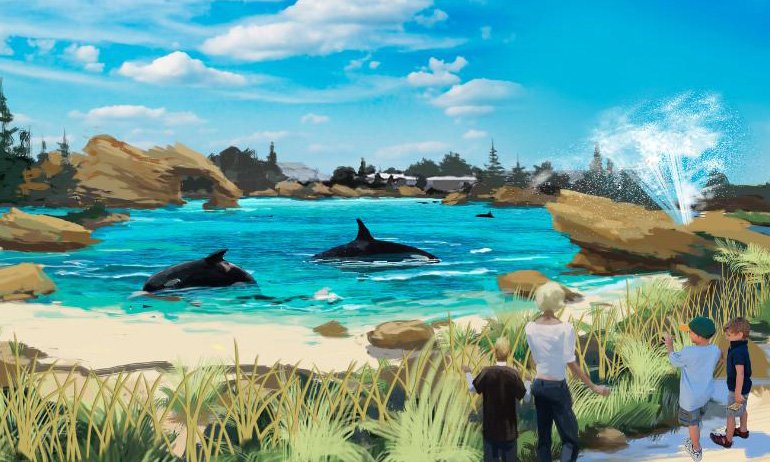
SeaWorld Works To Solve “Blackfish” Backlash—With Association Help
The theme park chain, which has faced serious knocks to its reputation (and a drop in its stock price) due in part to a popular documentary, hopes that a new park design will help assure the public that it's keeping the orcas safe. Several associations are backing the effort.
SeaWorld has a lot more to worry about than its next Shamu show, including serious ethical questions and animal rights concerns regarding its primary product. It’s ready to tackle these issues head-on, however. More details:
The problem: SeaWorld Entertainment, the major theme park chain known for its killer whales, has struggled in recent years with declining attendance, tied in part to negative press. The challenges began in 2010, when trainer Dawn Brancheau was killed by an orca named Tilikum during an event. Gabriela Cowperthwaite’s award-winning documentary “Blackfish,” which drew major ratings for struggling CNN last year, focused on the circumstances around Brancheau’s death, as well as the treatment of killer whales in captivity. In recent months, public figures and musical acts have distanced themselves from the parks, and last week, the company’s stock took a nosedive after it announced financial results that showed clear signs of a backlash from the controversy.
The planned fix: But SeaWorld Entertainment, which also runs two Busch Gardens locations and a number of water parks nationwide, is not taking the decline lightly. Last week, the chain announced an ambitious plan to create new habitats for its killer whales that span much larger spaces and give park attendees an up-close-and-personal view of the whales. “Our guests will be able to walk alongside the whales as if they were at the shore, watch them interact at the depths found in the ocean, or [get] a bird’s-eye view from above,” SeaWorld Entertainment President and CEO Jim Atchison said in a news release. The building of the facilities, the first of which will open in San Diego in 2018, will be overseen by a group of advisors that includes executives from the Association of Zoos and Aquariums, National Marine Mammal Foundation, and American Humane Association. The move also comes with a charitable donation—SeaWorld Entertainment will donate $10 million in matching funds to the Blue World Project, which focuses on threats that face killer whales in the wild.
Will it be enough? Animal rights groups such as People for the Ethical Treatment of Animals (PETA) are skeptical that these changes will be enough to solve the underlying problem. In their view, keeping orcas in captivity is fundamentally cruel. “This is a desperate drop-in-the-bucket move to try to turn back the hands of time at a time when people understand the suffering of captive orcas, and it will not save the company,” PETA’s director of animal law, Jared Goodman, told Bloomberg. “It’s a bigger bathtub with scenery for the humans outside it.” Meanwhile, the American Humane Association, which oversees the treatment of animals in film productions, has been criticized by animal rights advocates in recent years, most notably in a Hollywood Reporter exposé.
But some industry commentators see a more fundamental problem with SeaWorld’s plan: It makes the theme park look too much like a zoo.
“If SeaWorld wants to compete with theme parks and reverse its attendance slide, it’s going to need more than better habitat exhibits, even as impressive as this one appears to be,” argued Theme Park Insider‘s Robert Niles.
An artist's rendering of the planned park revamp. (SeaWorld Entertainment, Inc.)






Comments